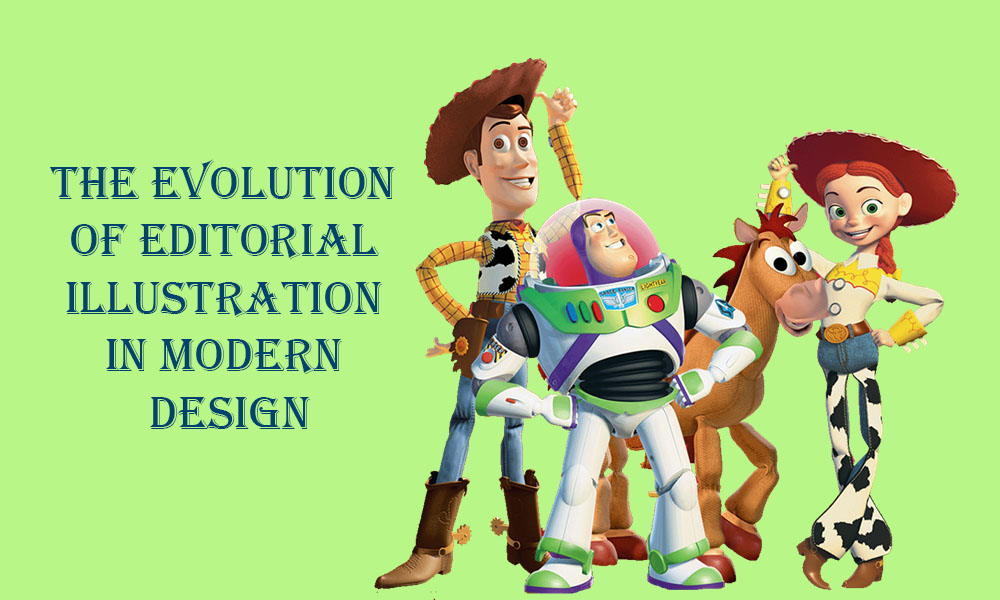Business cards are still one of the best instruments for brand marketing, even though digital communications have taken over our everyday interactions. They are professional, small, and, with the correct design, completely memorable. In 2025, branding, aesthetics, and creating a lasting impression are more important than name and number on business cards. Let’s examine how you may improve your brand and make a lasting impression with the newest trends in business card design.
The Significance of Business Cards in the Digital Era
Initial Impressions Matter
Let’s face it, presenting a polished, well-designed business card to someone you meet at a networking event instantly makes you appear put together and professional. That’s when you declare, “I take my brand seriously.” Unlike a digital connection request, a well-made card tells a story and provides a physical and visual experience that lasts much longer.
Physical Reminders in an Online Environment
Emails can be misplaced. It’s easy to forget digital contacts. However, a business card stuffed into a wallet, fastened to a corkboard, or left on a desk? That’s a physical presence—a tiny billboard that promotes your business all day, every day. This little piece of cardstock has gained even more value in a world full of digital cacophony.
The Transition to Minimalist Styles
It’s Better to Brand with Less
Business card design is being heavily influenced by minimalism, which isn’t going anywhere. Clean, targeted designs that convey more with less are becoming more and more popular among brands. It’s all about clarity and confidence. A simple design with strong branding speaks volumes and avoids visual clutter that can distract or confuse.
Negative space and neat typography
In order to make the card easier to read and more aesthetically pleasing, designers are using negative space to highlight the important details. Rather than cramming all of the contact information into a small font, brands are showcasing only the most important information—and doing it in style.
Using Bold Fonts to Make a Statement
Font Characteristics and Size
The days of business cards being dominated by little, uninteresting writing are long gone. Big, bold font that makes a statement is the main trend of today. Custom typefaces, imaginative layouts, and oversized fonts allow you to quickly convey your individuality.
Creativity versus Readability
Being assertive while maintaining readability is a delicate balancing act. By experimenting with letter space, alignment, and contrast, designers are pushing the boundaries while keeping user experience in mind. After all, it doesn’t matter how awesome the design is if someone can’t read your name.
Environmentally Friendly and Sustainable Materials
Innovative Materials and Recycled Paper
Brands are reacting to consumers’ attention to sustainability. These days, business cards made from bamboo, recycled paper, seed paper, or even used T-shirts are popular. These cards represent your brand’s beliefs and environmental commitment in addition to sharing your information.
Developing an Ethical Brand Position
Using environmentally friendly materials is a brand decision, not merely a design one. Your brand demonstrates that it lives up to its promises when a customer notices that your card is composed of recycled or sustainable materials. It’s branding that performs well and feels nice.
Smart and Interactive Business Cards
Using NFC technology with QR codes
By 2025, smart cards will be commonplace. A portfolio, LinkedIn page, or even a customized video message can be easily accessed with QR codes. NFC-enabled cards—tap to connect—are also becoming more popular. It’s futuristic in addition to being practical.
Overcoming the Digital-Physical Gap
People may access deeper, more interactive experiences with smart business cards, which facilitate a smooth transition from offline to online. As a result, your card becomes more than simply paper; it serves as a portal to the online world of your company.
Distinct Shapes and Die-Cut Patterns
Making a Statement with Custom Cuts
Cards might be square, round, triangular, or even shaped like your product. Brands are becoming more daring in 2025 by using unconventional shapes. Die-cutting enables you to create distinctive silhouettes that represent your business or style. For instance, a card designed like a house for a realtor or a camera for a photographer. These are conversation openers, not simply cards.
Why is this important? For example, can you guess which standard business card someone will take out first from a stack? Yes, the one with the distinctive shape. It immediately attracts attention, piques interest, and improves the memorability of your card—and consequently, your brand.
Creativity against Practicality
The distinction between being inconvenient and being innovative is subtle. Even if your card is creative, it may be thrown away if it doesn’t fit in a wallet or regular cardholder. Successful designs therefore achieve a balance between being both aesthetically pleasing and enduring. Designers are now focusing on compact yet distinctive shapes that grab attention without sacrificing functionality.
Color Trends for Business Cards in 2025
Bright Hues vs. Subdued Palettes
Color selection is a branding power move that goes beyond simple aesthetics. Two dominant trends for 2025 are bright, vivid colors that shout confidence and demand attention, and soft, muted tones that radiate elegance and sophistication.
Gentle pastels and earth tones produce a serene, upscale vibe that is perfect for luxury services, consultants, or wellness brands. Bright oranges, neons, and electric blues, on the other hand, are excellent for IT companies, creatives, and startups who want to add vitality and youth to their branding.
Branding with Color Psychology
Colors have an effect on the mind. Red expresses passion, green symbolizes growth and environmental consciousness, and blue fosters trust. Choosing the correct palette based on your brand’s beliefs can dramatically influence how people see you. It’s not just about looking good—it’s about communicating something profound without saying a word.
Finish and Texture Are Important
Glossy, embossed, and matte finishes
Touch-Based Sensory Branding
In digital-first marketing tactics, texture is sometimes disregarded, but physical branding offers you a significant advantage. The raised print from thermography, the softness of silk lamination, or the roughness of recycled kraft paper are all more than just tactile sensations. They are indicators of emotion. Tech cannot mimic the connection that sensory branding makes with consumers regarding your brand.
Typeface-Centered Designs
Allowing Fonts to Speak
Typography is about personality as much as legibility. In 2025, designers are leaning significantly into typography as the focus point of the business card. Consider using large typefaces, sophisticated serifs, or whimsical handwriting; each option makes a distinct statement about the aesthetic of your company.
Distractions are eliminated with typography-centered cards, which only highlight your name and position in an eye-catching manner. It’s akin to declaring, “I don’t need extra frills because I’m confident enough in who I am.”
The Art of White Space
Negative space, often known as white space, is not wasted space. There is breathing room. It rests the eyes and helps them focus on the important things. When a card has too many components, it might become overpowering. However, one that effectively employs white space feels well-chosen, refined, and high-end.
Strong, contemporary, and enduring impressions are produced by brands that successfully strike a balance between bold typeface and simple design features.
Using Brand Components Continually
Brand colors, logos, and icons
A business card has to be a miniature representation of your company’s image. Consistency is therefore essential. To improve awareness, make use of your brand’s colors, iconography, and emblem. Whether you distribute a single card or a thousand, each one should immediately convey your identity and activities.
Effective business cards only need to complement the rest of your branding; they don’t need to be ostentatious. Your card, social media accounts, and website should all seem to be a part of the same narrative.
Matching Your Card to Your Whole Identity
Consider your business card to be the handshake of your brand. It need to convey your personality, ideals, and tone. While a creative agency might choose to employ bold designs and original artwork, a luxury company would utilize foil stamping and thick cardboard. It must feel like you, regardless of the style.
Make sure your card speaks the same language as your brand because it is an extension of it.
Designs with Two Sides for Maximum Impact
The Front vs. the Back: What to Wear
What’s the point of wasting half your business card? By 2025, double-sided designs will be the norm for companies trying to make the biggest impression. Usually, your name, role, and logo are displayed on the front. tidy and expertly done. However, if you turn it over, you can use your imagination.
Put something unique on the back, such as a brief pitch, a QR code, a brand catchphrase, or simply a simple portfolio photo. Additionally, you might add brand mission statements, social media accounts, or a coupon code.
Utilizing Every Inch
Consider your card’s back to be great real estate. Strategic use of it is the aim, not cluttering it. That second side offers you another opportunity to stand out—and be remembered—whether it’s with a simple, monochromatic design that includes a QR code or with an artistic design that captures your essence.
Personalized Details to Make It Memorable
Personal Notes and Personalized Illustrations
Personalization is a welcome change in an age of mass manufacturing and automation. Adding a personal touch to business cards, such as handwritten thank-you notes, doodles, or even signing the card before delivering it, is one of the hottest trends for 2025.
These modest actions demonstrate consideration. They give the recipient a sense of specialness, as though they are the person you are eager to connect with rather than just one of many. It transforms an ordinary card into a memento.
Giving It a Personal Touch
Imagine receiving a card with a quick note that reads, “Great chatting with you at XYZ event!” or a hand-drawn doodle that is specific to your conversation. Your card instantly transforms from a simple contact list into a personal link and a keepsake of an actual conversation. Emotional branding is what that is.
Avoid These Business Card Design Errors
Poor Fonts and Overcrowding
Less is more. Trying to cram too much into a little card is one of the worst design errors. Every phone number, email address, and work title is not necessary. Keep it tidy. Pay attention to what really important.
Then there is the selection of fonts. Using fonts that are difficult to read or too styled can make your card less impressive and more annoying. Put clarity first. Someone should not have to squint to read your information on a well-designed card; it should be simple for them to get in touch with you.
Disregarding Print Specifications
Have you ever created a stunning card only to have it appear completely incorrect after printing? Yes, that occurs more often than you may imagine. Safe zones, resolution, and bleeding lines are important. Make sure you comprehend the printing specifications if you’re creating your own card, or collaborate with an expert who does.
In addition to being visually appealing on screen, your design should print well. This entails selecting the appropriate paper stock, using high-resolution images, and verifying your colors in CMYK.
In conclusion
By 2025, business cards will have changed and are still very much in use. Contact slips have evolved into little brand ambassadors that, in a matter of seconds, communicate your identity and values. Your card delivers a tale through creative tech integration, eco-friendly materials, or strong font. In a world full of digital noise, it produces a physical, visual, and emotional experience.
Putting effort and imagination into the design of your business card is a strategic branding decision, not just a design decision. Your business card is an excellent starting point if you want to improve your brand, stay on top of trends, and make an impression that people will remember.





Hey there!
Welcome to Moviezhive.com, where blockbuster entertainment is just a click away!
Stream a vast collection of Bollywood, Hollywood, and international movies for free—no subscriptions, no hassles.
What Makes Us Special?
✔️ Thousands of movies across all genres
✔️ Zero pop-up ads for seamless viewing
✔️ Advanced zero-buffering tech for smooth playback
✔️ Fresh titles added regularly
Can’t find a movie? Request it, and we’ll upload it fast!
Watch anytime, anywhere. Visit https://moviezhive.com now and start your movie adventure!
Enjoy the Show,
The Moviezhive Team